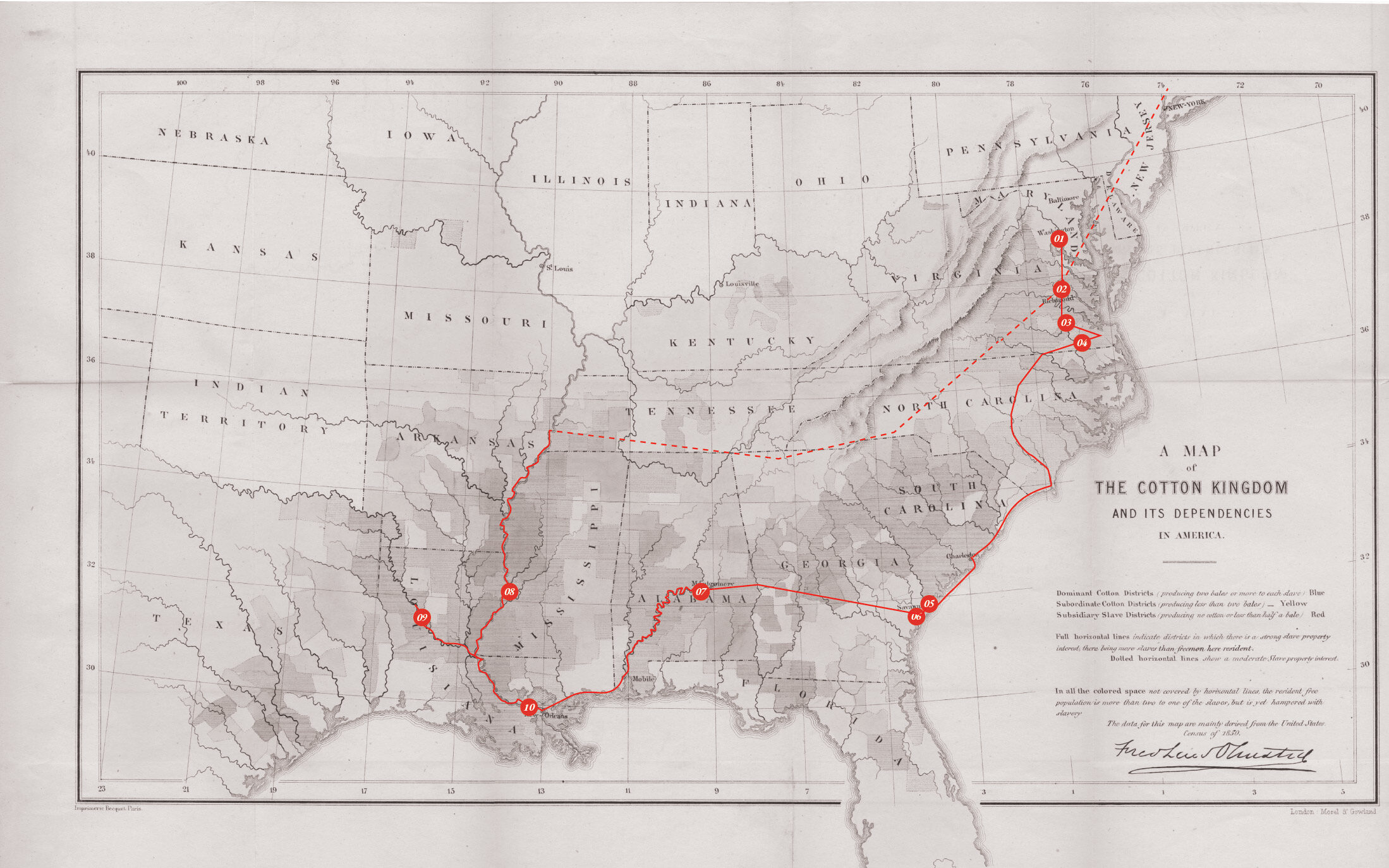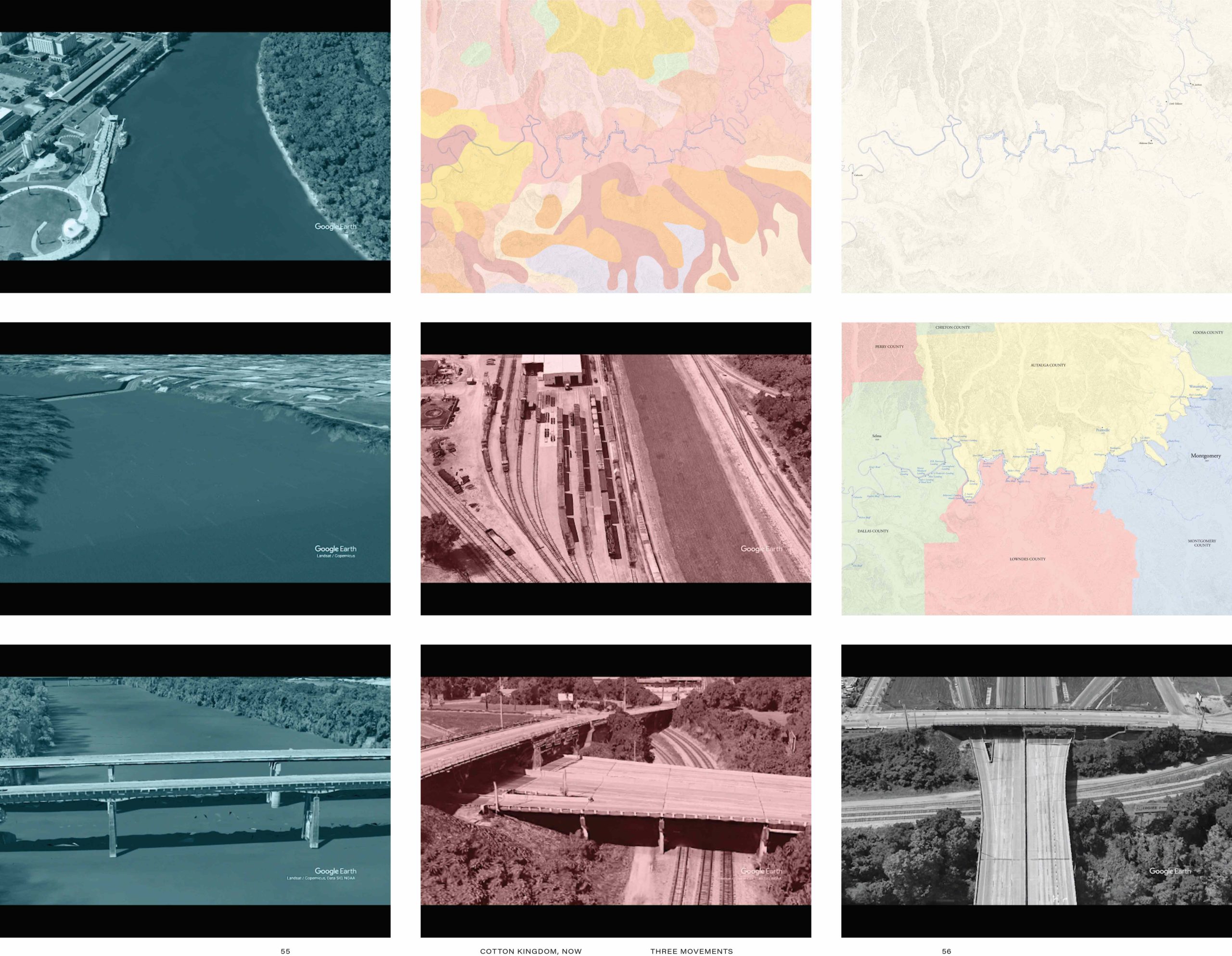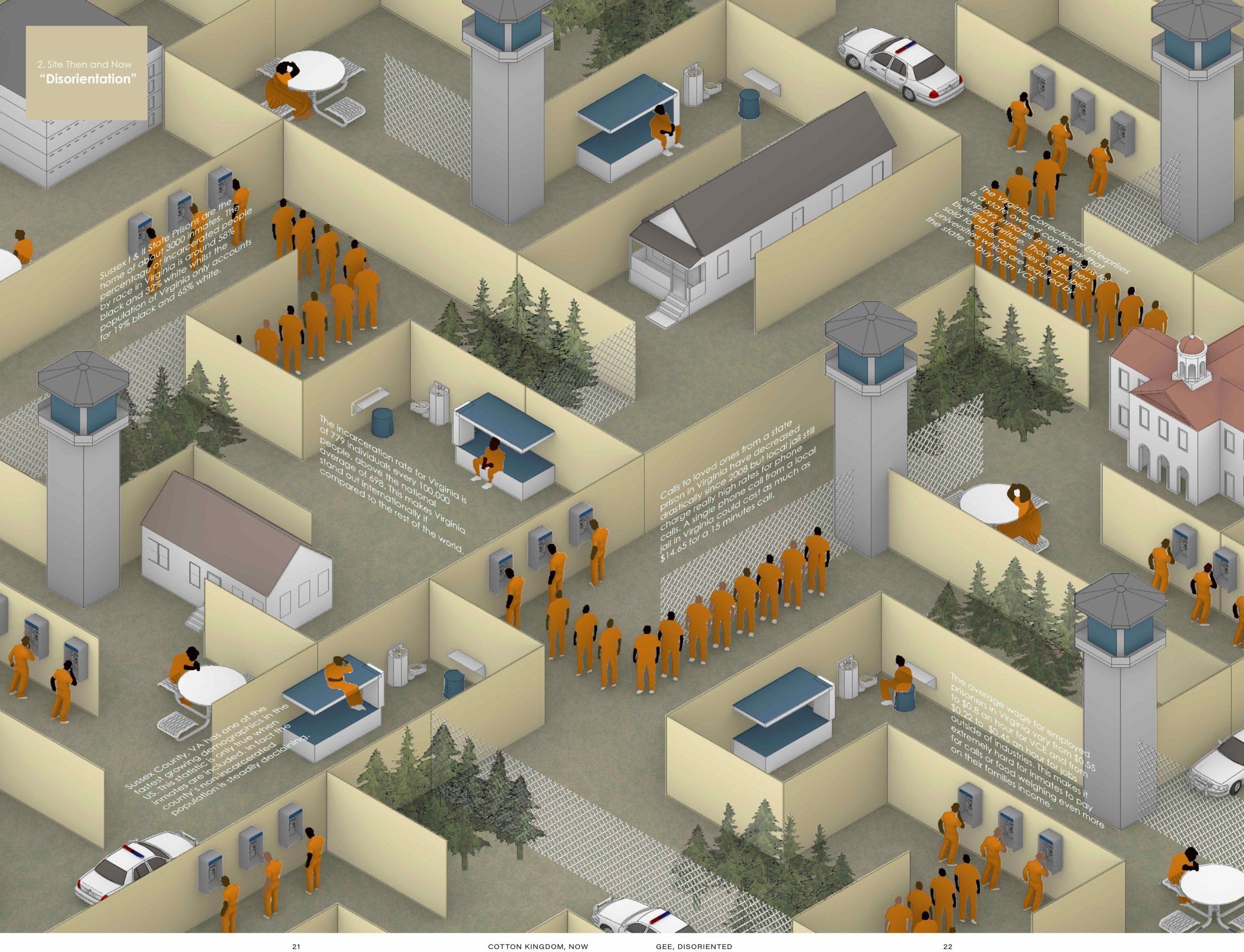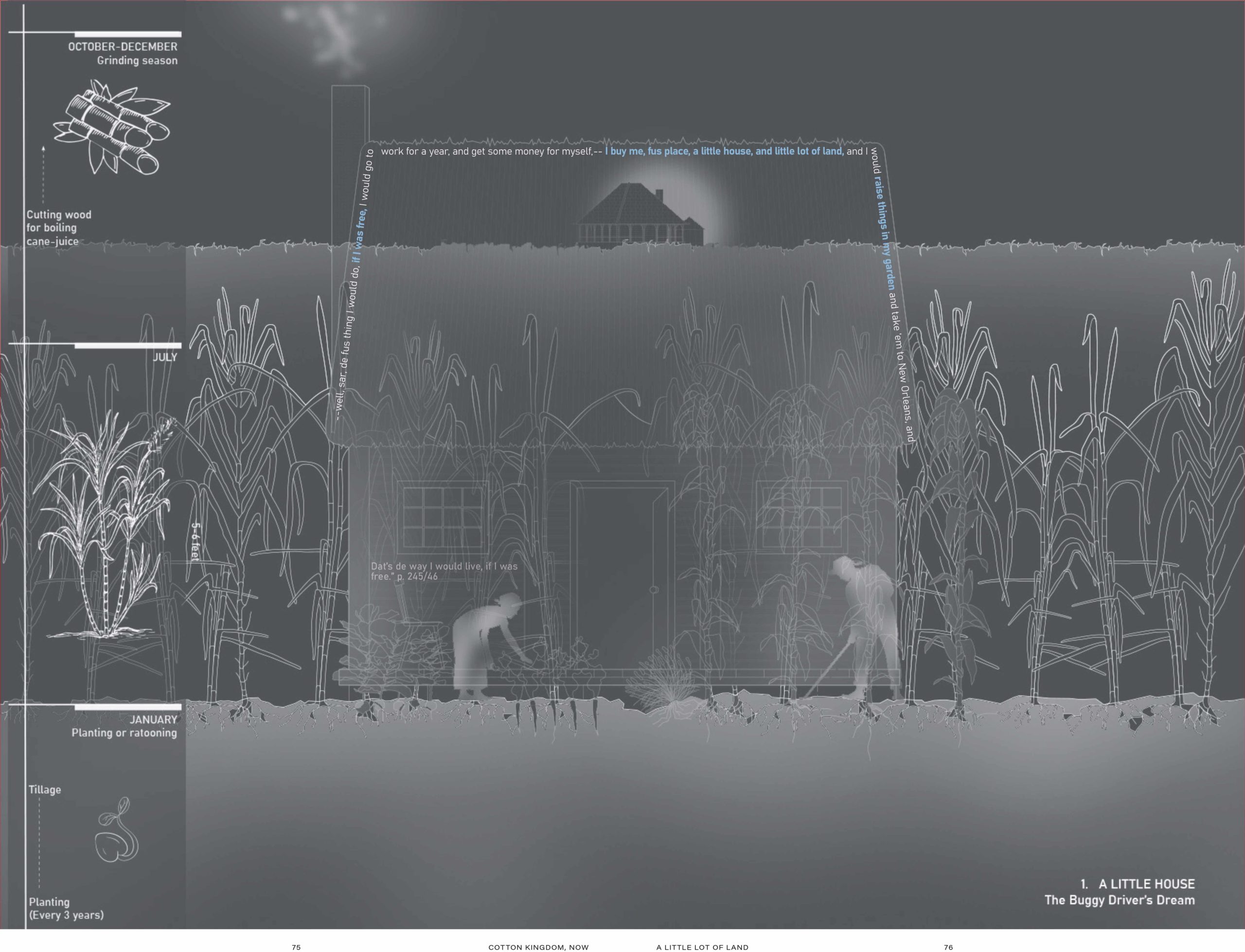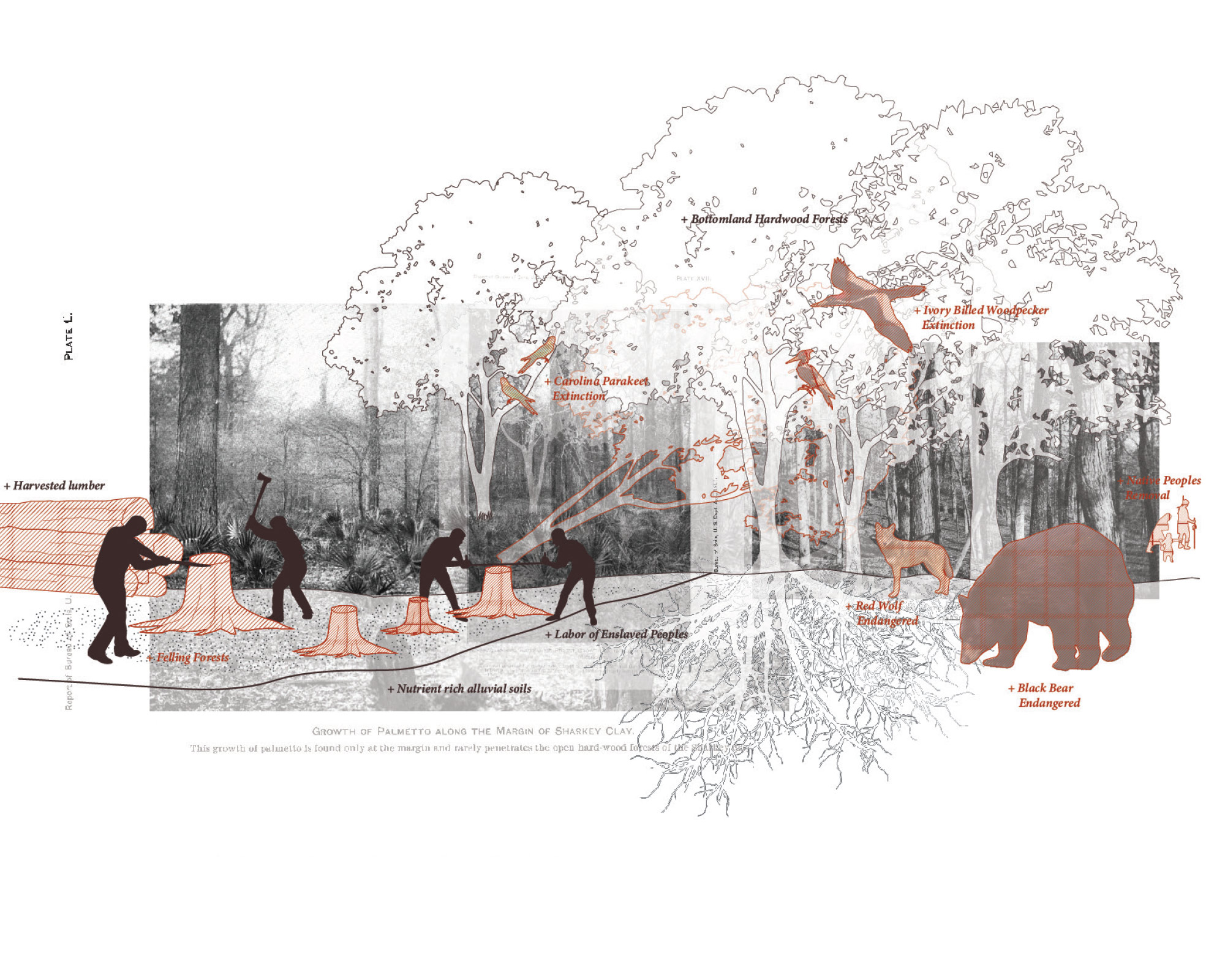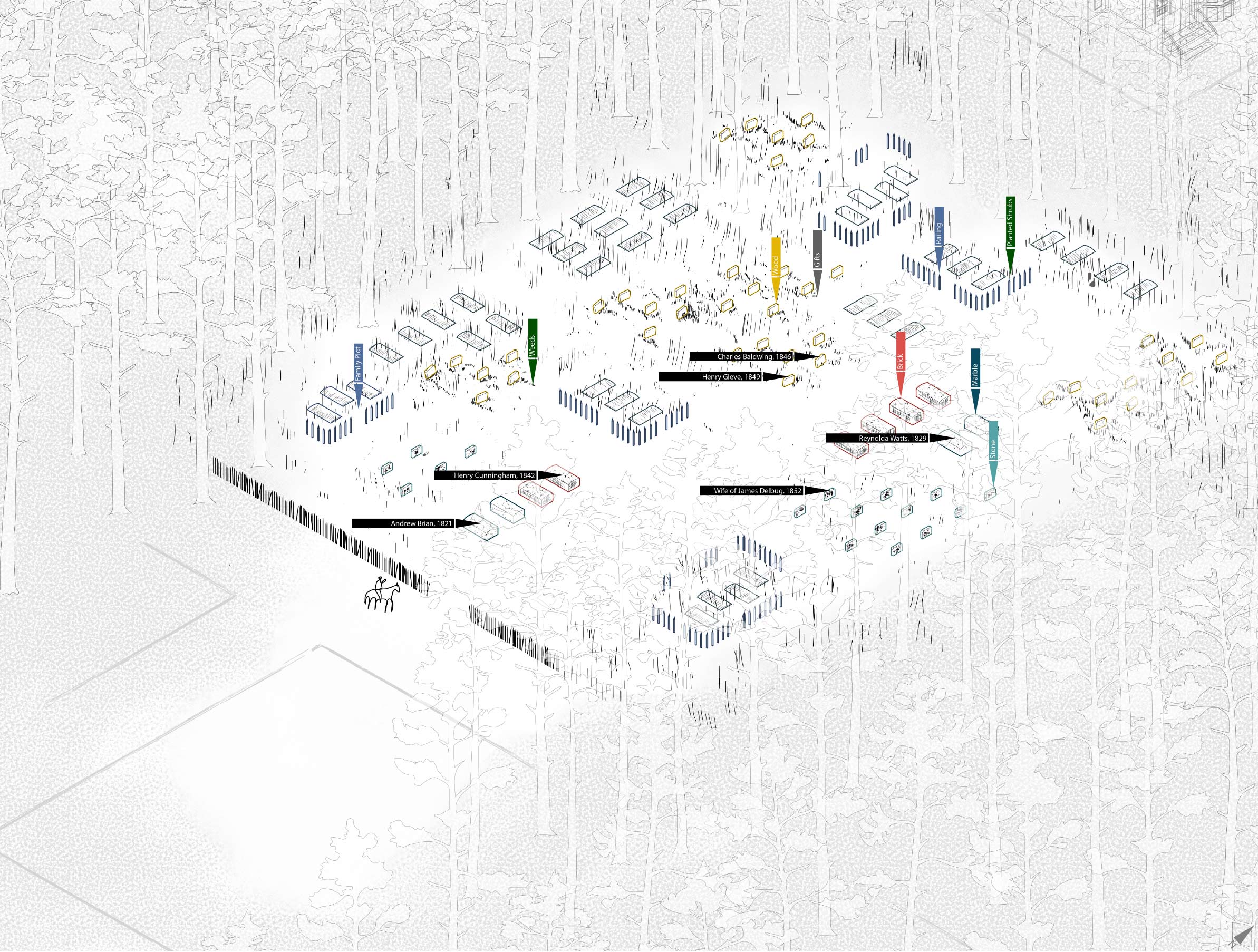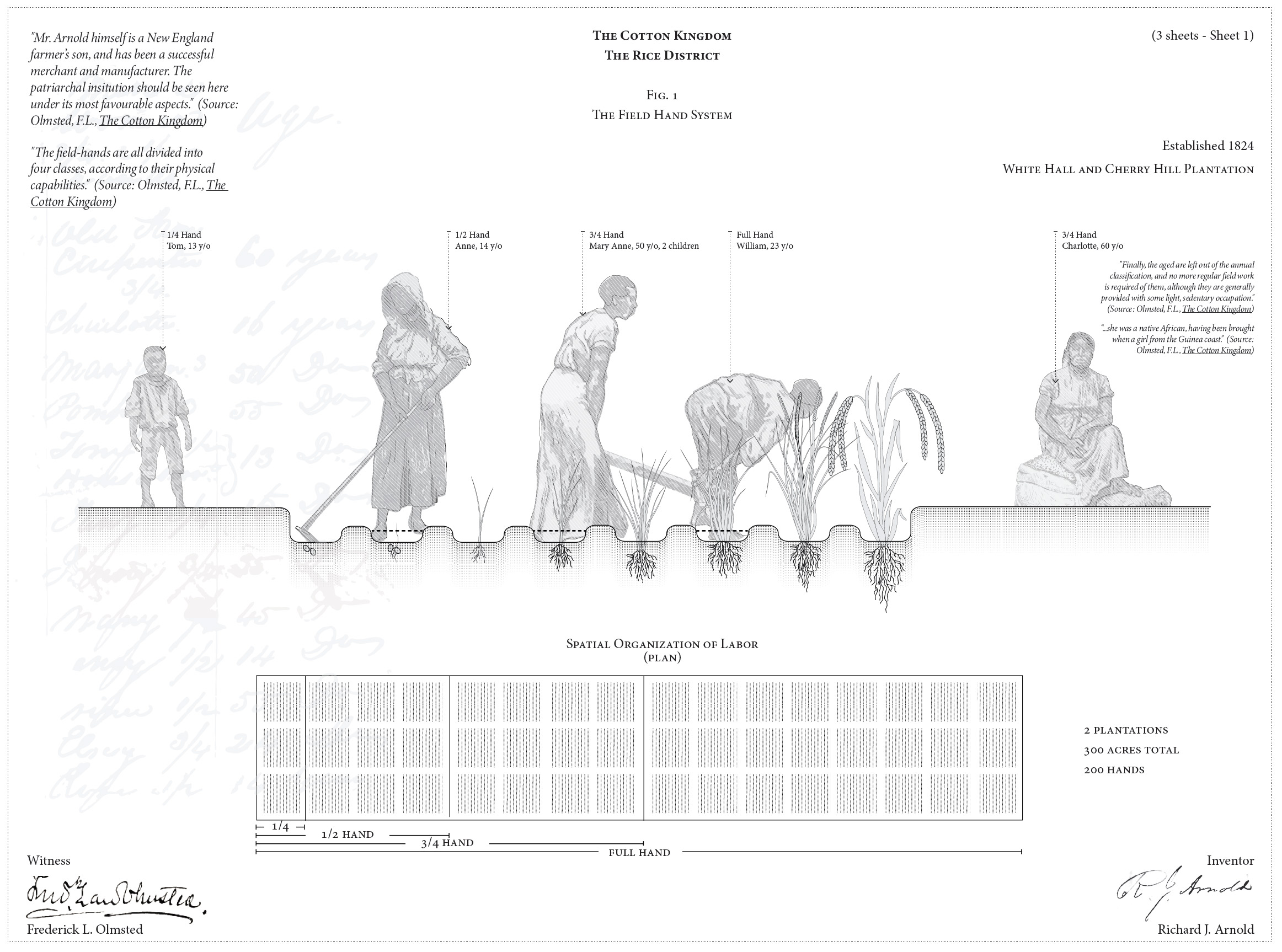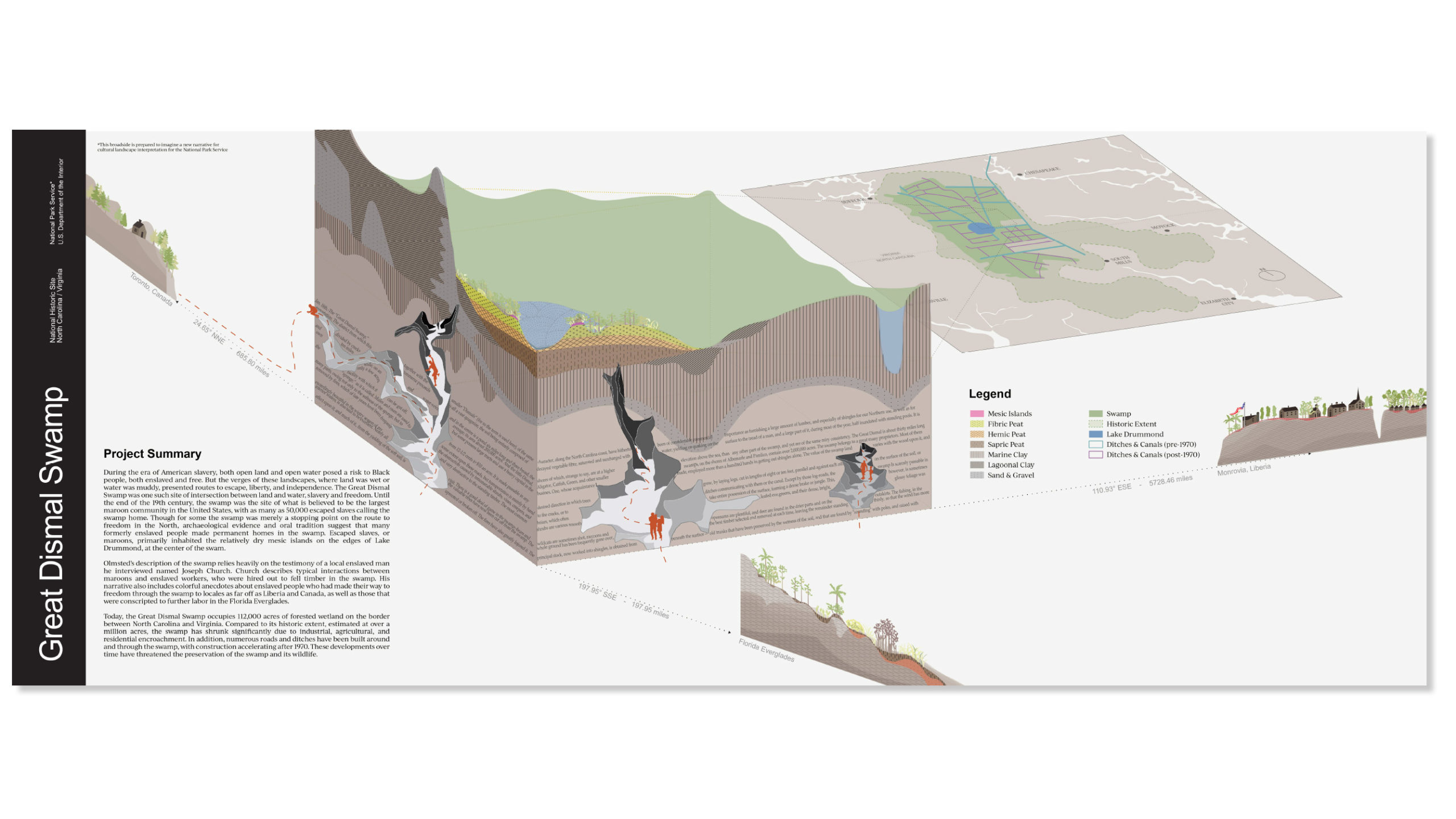“The mountain ranges, the valleys, and the great waters of America, all trend north and south, not east and west,” says Frederick Law Olmsted in the introduction to his 1861 book, Journeys and Explorations in the Cotton Kingdom. “An arbitrary political line may divide the north part from the south part, but there is no such line in nature—there can be none socially.”
Long before Olmsted mulled over the landscape of Central Park or pondered the potential of shared green space in the urban fabric of American cities, the father of modern landscape architecture was a curious 30-year-old unsure of his purpose. In 1852, following travels from China to England, where he came to understand the complex relationship between landscape and class, power, ecology, and identity, Olmsted was dispatched to the Southern slave states by the New York Times. For the next two years, against the volatile backdrop of the Compromise of 1850—five bills that served as a temporary truce on slavery and territorial expansion after the Mexican-American War—Olmsted reported on the cultural and environmental qualities of the region in scintillating detail. He traversed the networked web of slavery, society, and economy, and unpicked the myriad ways that these forces played out in the sweeping landscapes of the American South.
Across two trips, Olmsted visited tobacco plantations in Virginia and the Great Dismal Swamp of North Carolina. He happened upon slave burial grounds in Savannah, Georgia and journeyed the Emigrant Road of East Texas to the borderlands separating the US from Mexico. He witnessed Black burials outpouring with song and emotion; he also saw the hanging of an enslaved woman who had killed her own child, for whom she feared a life of unending suffering. He spoke to both enslaved people and slave owners, abolitionists running free-labor plantations and racist drunks in small-town bars to probe the heart of the South’s cotton complex: to not only describe the region, but to carve out a space for a more nuanced understanding of the South in order to find common ground and a path to abolition.
Olmsted remained committed to his research on the Cotton Kingdom throughout his career as a landscape architect, even stepping down from his demanding position as superintendent of Central Park to rewrite portions of the text ahead of its 1861 publication. His research methodology, visceral narration, and sensitivity toward the South and its many discrete agents remain powerful tools for reading the built landscapes of past and present. And this proposition is precisely where Sara Zewde’s Fall 2020 seminar “Cotton Kingdom, Now,” begins.
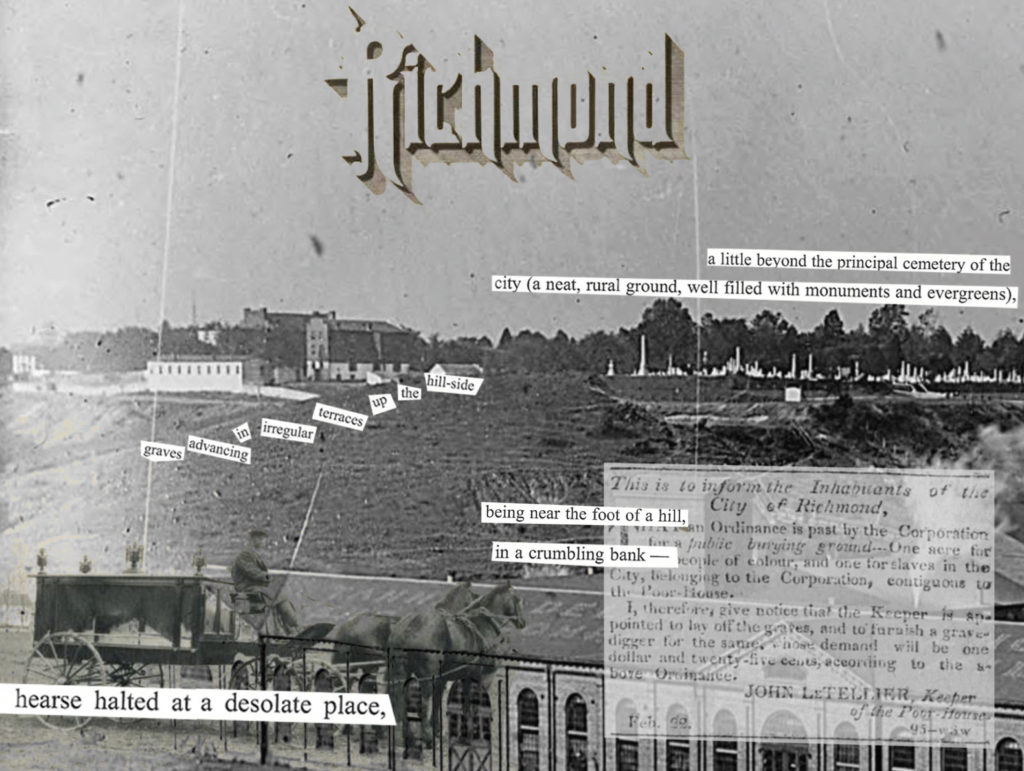
“Olmsted is considered the father of landscape architecture, but this body of work is rarely talked about,” explains Zewde, assistant professor of practice in the department of landscape architecture at the GSD and founding principal of Studio Zewde. “It was very clear to me how the discipline’s actual founding was propelled by the South. And if we are to refer to Olmsted as the father of anything, we should be looking at the historical value of this document and its methodological proposition—the question of how a landscape architect can conceive of a practice that’s in line with larger social and economic readings of a place.”
In “Cotton Kingdom, Now,” Zewde presented a cross-temporal pedagogical approach derived from her own experience of retracing Olmsted’s route through the Southern states in 2019. Twenty students embarked on this experimental seminar, which drew upon Olmsted’s original text and other primary historical documents from Black abolitionists like Frederick Douglass and Solomon Northup alongside a range of contemporary authors including historians, journalists, and social psychiatrists, from Toni Morrison to Alexander Manevitz and Mindy Thompson Fullilove. Working in pairs with their pick of one of 10 sites visited by Olmsted, the students’ challenge was threefold. First, they conducted a visual literary analysis of Olmsted’s text, paying close attention to the details in the landscape, the characters he meets, and the language he utilizes to render these scenes vivid and alive. Second, they developed a comparative visualization of their chosen site, then and now. Finally, the students re-presented the Cotton Kingdom, tracking the political, ecological, and environmental changes to their site over the past 165 years.
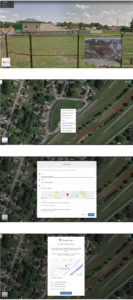
Part three is where the real challenge and opportunity to develop a cross-temporal, cross-country research methodology truly kicked in. While COVID travel restrictions remained in place, students grappled with multiple scales and narratives by using Google Maps and other geographic information system software, applying remote research strategies, and making contact with locals “on the ground” to garner a more nuanced understanding of physical space. They followed the ebb and flow of topographic transformations and the challenge of re-presenting this history. “Perhaps because of the physical impossibility of visiting these sites, not in spite of it, the students’ work became a lot more ambitious and locally focused,” reflected Zewde.
From Google Maps hacktivism to bootleg social media accounts and guerrilla publishing, the final projects of “Cotton Kingdom, Now” employed a variety of new and experimental media to embody the multidisciplinary approach of the seminar. The students’ outreach to local agents who sustain a direct relationship with their chosen sites—and whose own family histories are often intertwined with these storied landscapes—resulted in an intimate collaborative bond that transcended the walls of the (virtual) classroom. Attending the final review on December 2 were special guests Justin Plummer III and Haki Kweli Shakur, who were involved in Rachel Coulomb and Cynthia Deng’s “Mount Rose Homestead” project and Caroline Craddock and Charles Burke’s “Second African Burial Ground” project, respectively.
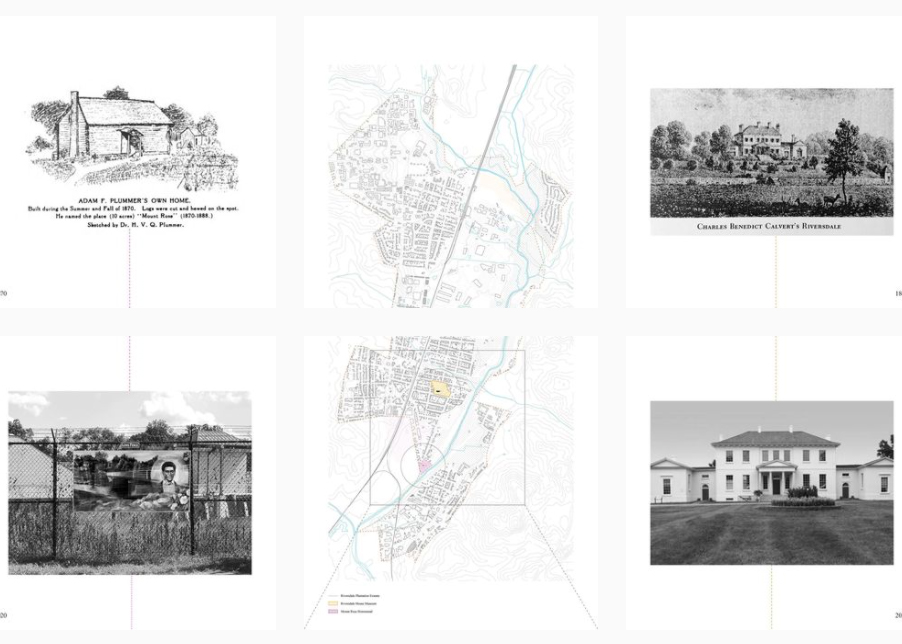
In the former, Coulomb and Deng created a Google Maps pinpoint for the family homestead in Maryland and an Instagram account for Mount Rose which serves, in the students’ words, as a “virtual museum and archive of stories to re-present the Cotton Kingdom through this dearly cherished family home.” Adding the “missing place” to Google Maps generates a digital-physical palimpsest of architectural history—while a memorial poster echoes this sentiment on the ground. In addition to spotlighting the stories of the Plummer family—formerly enslaved people who owned and lived in Mount Rose since Adam Plummer purchased the land in 1868—the Instagram archive presents letters, architectural drawings, and excerpts from a book published in 1927 by Nellie Arnold Plummer on her family history. As the course comes to a close, Coulomb and Deng plan to pass the account on to Justin Plummer III and the rest of the family, so the story may live on in their own hands. “Many of the projects created in this seminar have long lifespans—what you’re seeing today is one step in a long trajectory,” said Zewde.
In “Second African Burial Ground,” Craddock and Burke teamed up with Shakur, a Richmond-based historian, researcher, and activist, to unearth the lost history of the Burial Ground located at Richmond’s 5th & Hospital streets. Between 1816 and 1879, 22,000 Africans were buried in the cemetery with no historical recognition. Today, it sits beneath the sprawling I-64 freeway, denoted by an abandoned auto service building and a yellowing billboard. Against state plans for highway expansion and additional train infrastructure that would overwrite this history yet again, activists are attempting to have the site declared a national historic landmark.
The project also examines, through a series of videos in which Shakur serves as narrator, the many ways in which the Shockoe Creek Ravine splits Richmond in two and reinforces historic structures of control. “You have to be here to experience it,” shared Shakur in the review. “When you come to this area and you see the things that are still there—the Richmond Slave Trail, the Burial Ground—even down to the bricks you walk on, they still have the bricks they took from London to America to build up this area in order to sell human Black bodies.”
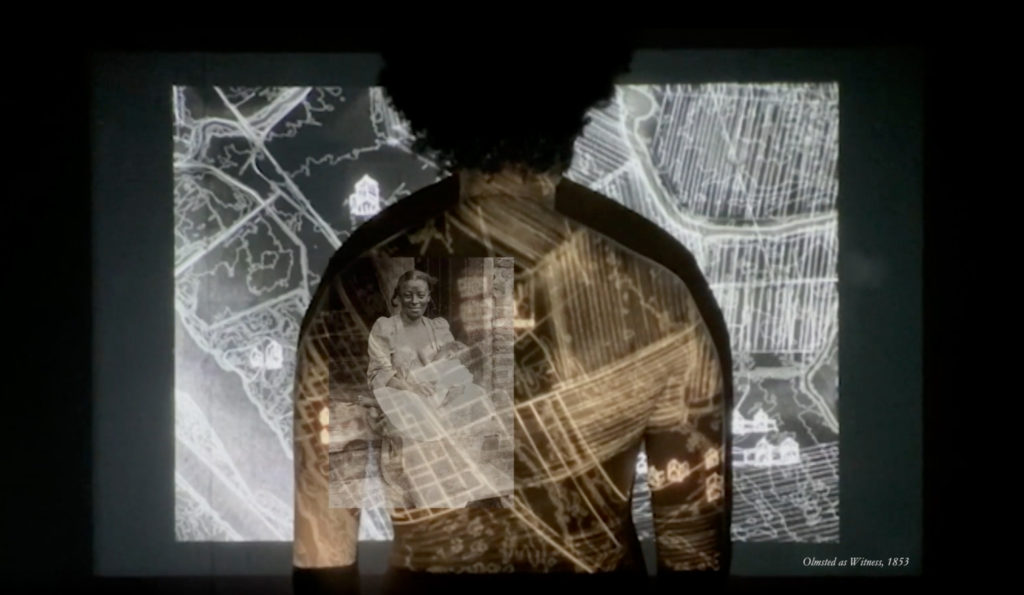
Other students utilized experiential media and compelling storytelling to trace a line between Olmsted’s vision and the present. Aria Griffin and Kanchan Wali-Richardson’s project, “From Womb to Womb,” unpacks the terrible legacy of the Calhoun Plantation—the most violent and exploitative space that Olmsted saw during his travels. In the four-minute-long film, Griffin and Wali-Richardson connect the brutality toward enslaved women on the plantation to the disproportionately high Black maternal mortality rate in the United States today—which ranges from two to eleven times more than white women across the country. The contrast between the aesthetic delicacy of the film—the projected light pooling and shaking over skin, the layering of family histories onto the body—and the horror that it portrays results in a powerful work. The film viscerally presents the politics and poetics of the Black body as landscape, as a history of embodied exploitation, and as haunted by structural racism today, particularly in its life-giving capacity.
“Cotton Kingdom, Now” was taught in the run-up to the bicentennial of Olmsted’s birthday in 2022. Zewde is also writing a book that reflects on her four months spent retracing Olmsted’s steps through the South, following her time as a Mellon Fellow at Dumbarton Oaks in Washington, DC. “Visiting the sites Olmsted writes about really brought to life the degree to which the social and economic conditions he describes are still present today,” said Zewde. “Excepting those incarcerated, people are not in physical bondage—that’s a clear difference. But the power dynamics I witnessed on my travels still strongly echo what he witnessed.”
Conceived as a dialogue with Olmsted, Zewde’s upcoming publication will incorporate her interest in carving out a new approach to embodied landscape design, while also addressing the need to properly historicize landscape architecture in both teaching and practice.
“When you’re born in a Black body in the South, you are prompted to an awareness about the histories of landscape that may not be taught or memorialized. Yet and still, the very visceral experience of going to these spaces and being able to so clearly track the past through Olmsted’s words and the present with my own eyes offered new levels of understanding to me about these places, and in fact, this history,” said Zewde. “Continuing to unearth and reflect on the degree to which owning, shipping, and selling millions of humans was a centrifugal force in the creation of our cities, industry, and socio-politics is crucial in shaping what we do as designers, and as citizens, today.”
